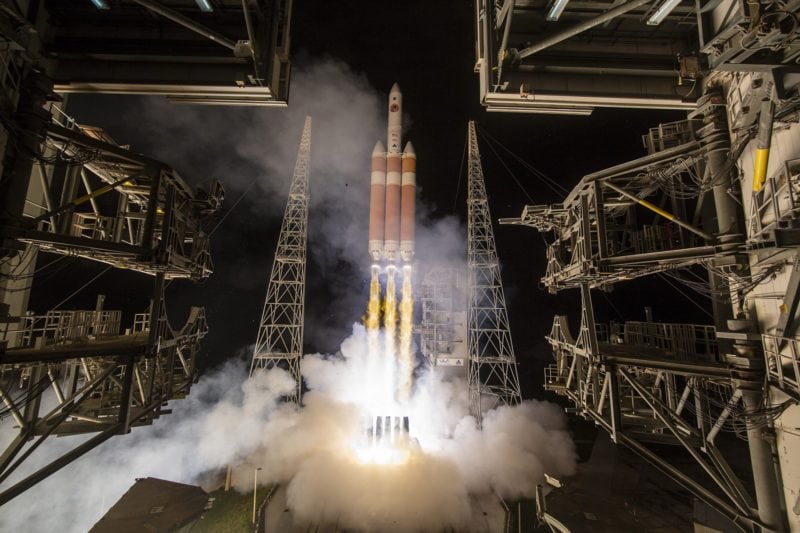Latest News

A United Launch Alliance (ULA) Delta IV Heavy rocket carrying NASA‘s Parker Solar Probe spacecraft lifted off from Space Launch Complex-37 on Aug. 12 at 3:31 a.m. EDT. NASA selected ULA’s Delta IV Heavy to begin the Parker Solar Probe’s journey to the sun. This was the 37th launch of the Delta IV rocket, and the 10th in the Heavy configuration.
The Delta IV Heavy delivers missions for NASA, the U.S. Air Force and the National Reconnaissance Office. With its cryogenic upper stage, Delta IV Heavy can deliver more than 14,000 pounds directly to Geosynchronous Orbit (GEO), as well as a wide variety of complex interplanetary trajectories.
This mission was launched aboard a Delta IV Heavy, which is comprised of three common core boosters each powered by an Aerojet Rocketdyne (AR) RS-68A liquid hydrogen and liquid oxygen engines producing a combined total of more than 2.1 million pounds of thrust. The second stage was powered by an AR RL10B-2 liquid hydrogen/liquid oxygen engine. Due to the extremely high energy required for the mission, the Delta IV Heavy’s capability was enhanced by a third stage provided by Northrop Grumman. ULA’s next launch is the ICESat-2 mission for NASA on what will be the final Delta II mission. The launch is scheduled for Sept. 15 at Space Launch Complex-2 at Vandenberg Air Force Base in California.
Get the latest Via Satellite news!
Subscribe Now